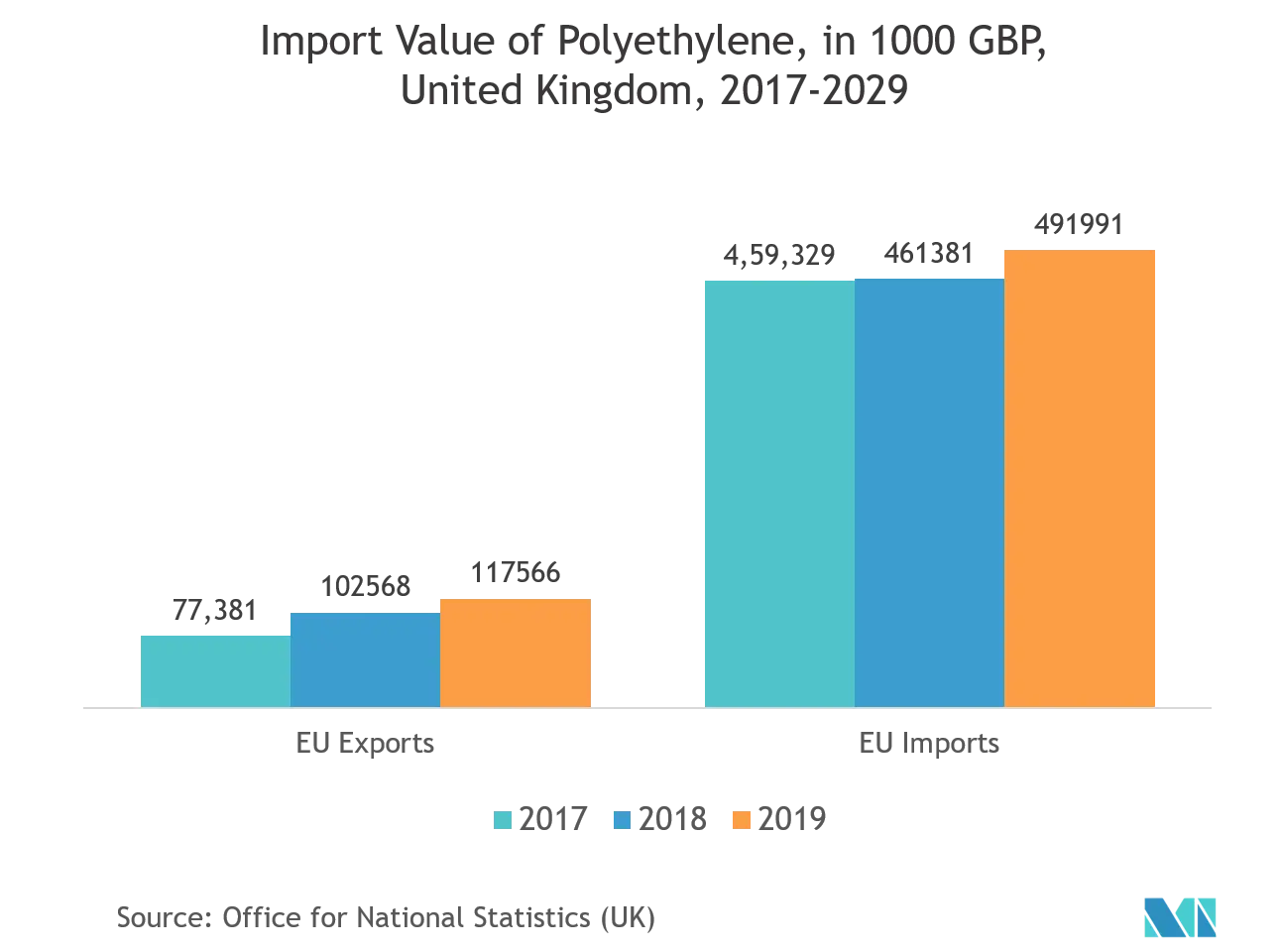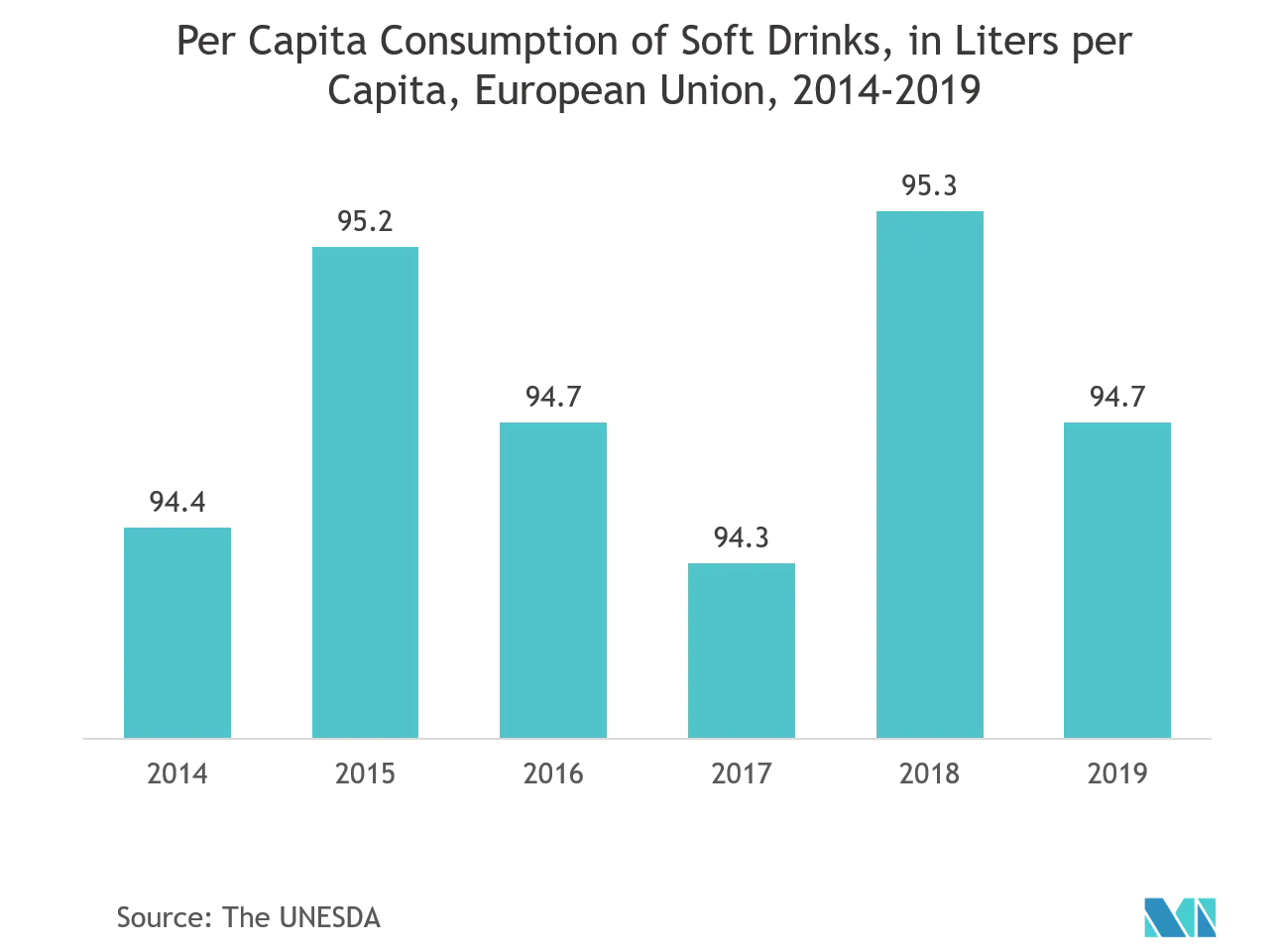Market Trends of Europe Shrink and Stretch Sleeve Label Industry
This section covers the major market trends shaping the Europe Shrink & Stretch Sleeve Label Market according to our research experts:
PE Segment to Witness Significant Growth
- Polyethylene is the most commonly used material for shrink and stretch wrapping because it is relatively cheap, and can be produced in a wide range of different densities and modified with additives to perform many functions. The vast majority of shrink film is LDPE, and some of the more sophisticated films have blends of LLDPE as well. Sometimes, a small quantity of HDPE material is also added.
- Most market players are launching new labels that offer a wide variety of sustainable solutions to choose from. For instance, in May 2020, UPM Raflatac launched UPM Raflatac Forest Film PE to complement its range of sustainable film labeling solutions. The new PE film label takes UPM Raflatac forward in its quest for a smarter future beyond fossils, decreasing the use of fossil-based virgin raw materials in home and personal care labeling applications.
- Furthermore, Barbier Group, a producer of polyethylene films and recyclers, is fully committed to transition to a more sustainable model. Using recycled polymers in its production process, Barbier Group reduces its carbon impact by reducing its consumption of virgin plastic (fossil fuels). One ton of recycled plastics, when replacing one ton of material from oil, corresponds to a savings of three tons of carbon.
- However, with the decline in the growth of PE, there is a delay in new capacity start-ups. A total of 7.1 million tons of PE were due on stream in the 2020 year, but 2.7 million tons of this was expected to be shifted to 2021 (source: European Commission).

Beverages to Occupy Significant Market Share
- The use of sleeve-format labels has been growing continuously in the beverage end-user segment. This is primarily driven by the growing competition for consumer acceptance.
- There is a growing trend of use of plastic bottles and aluminum cans for beverage products. Aluminum cans are increasingly using shrink sleeves, replacing direct printing. Sleeves provide the brand volume and versioning flexibility. Sustainability, shelf impact, functionality, and digital printing are expected to drive innovation in the use of labels in the beverage industry in the future.
- In order to address sustainability concerns, many companies are launching sleeves in new material formats. Sleever International recently launched the LDPET, a new product for the better recovery of used PET bottles.
- In February 2021, CCL Label launched EcoStretch, a sustainable stretch sleeve option, which, after use, would be recycled at the company’s facility in Austria and returned to the manufacturing process in an entirely closed production loop. The recycling facility would be located at CCL’s Voelkermarkt site in Austria, a hub for the production of stretch and shrink sleeves mainly produced for the dairy, beverage, and home care industries.
- Further, according to the Union of European Beverages Associations (UNESDA), in 2019, the average citizen of an EU member state consumed about 94.7 liters of soft drinks annually. Leading industrialized countries, such as the United Kingdom, see a much higher consumption of soft drinks than the EU average. In 2010, 238.2 liters of non-alcoholic drinks were consumed per person in the European Union, which increased to 243.9 liters per person by 2019. Such instances may lead to substantial market growth.


